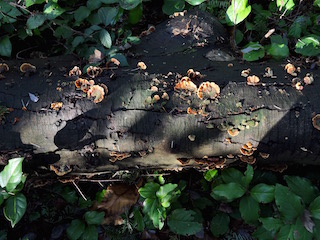Art in the Garden
An article in The New York Times (October 5, 2015) by Alva Noë about the place of art in people’s lives made me pause.
An article in The New York Times (October 5, 2015) by Alva Noë about the place of art in people’s lives made me pause. She makes the case that art begins where design stops. This is particularly true when the design is optimal, because then it is transparent. Noë suggests the well-designed object, be it picture, performance, or garden ‘disappears from view.’ That is the moment when the art is truly experienced.
This idea intrigued me. As the director of the Dunn I spend a lot of time in the Gardens and, except when hurried, something always stops me on my wandering. It could be a tree in bloom, a vignette of pots and flowers, a suddenly unique view, filtered light through branches, or leaf colors that make me take a breath. Is this not art? I wonder.
But Noë’s claim gains further credibility on reflection. As is true of all works in the Olmsted tradition, the design of the Dunn Gardens is transparent and thus does not intrude upon our experience of the landscape. The small visual moments, and the grand vistas created by the careful plans, simultaneously comfort us with their beauty and challenge our ideas. We enjoy having our habitual way of looking confronted, the commonplace made special, as we mesh our experience in the Garden with our larger understandings of such creations.
Of course, a garden has added advantages to confer over other forms of art. If the recent rash of articles is any guide, being among trees and plants is extraordinarily beneficial. So, in a well-designed garden, the visitor experiences art that helps her become mentally and physically refreshed. When visiting the Dunn, we’d like to posit, you get the two benefits at once.
Individually this is satisfying, but there is something beyond even this. Over the course of this centennial year, the Dunn Gardens has welcomed many visitors. Perhaps it is the awareness of a significant milestone, the particular cherishing of history and preservation, but there has been more of the usual well-being and joyfulness evident. It has created a sense of community among visitors that those of us who work on behalf of the Dunn Gardens are pleased to witness. We can thank the Olmsted design and the art it allows. But, we also can thank the visitors who have enhanced the Gardens with their pleasure and their donations that help sustain it. We all are singularly lucky beneficiaries.

